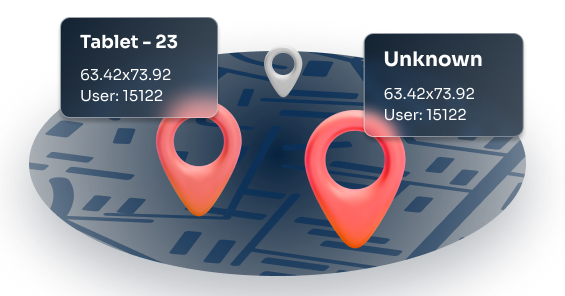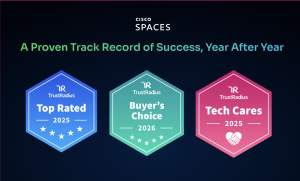
Implementing an effective asset tracking solution can help businesses optimize resource allocation, prevent loss or theft, and enhance overall operational efficiency.
With many asset tracking solutions available on the market, choosing the right one for your organization can feel overwhelming. To make an informed decision, consider these five key factors when selecting an asset-tracking solution:
1. Functionality and features
Consider the functionality and features that align with your organization’s specific needs. Determine if you require real-time tracking, alerts, mobile access, or customizable reporting. Evaluate whether the solution supports easy asset management, including onboarding, grouping, bulk management, policy configuration, and end-to-end monitoring. Assessing these features ensures the solution will effectively meet your asset tracking and management requirements.
2. Scalability and flexibility
As your business grows, your asset tracking needs may change. Choose a solution that is scalable and flexible to adapt to future requirements. Avoid fragmented, proprietary solutions that require disparate hardware and software, as they limit scalability. Opt for a solution that allows you to add assets, locations, and users without disrupting current operations. Scalability and flexibility are crucial for the long-term sustainability of your asset-tracking processes.
3. Integration with existing systems
Ensure the asset tracking solution can integrate seamlessly with your current systems. For instance, if you have a cloud-based asset management system or web-based inventory management, the new solution should work smoothly with these. Integration prevents data silos, improves data accuracy, and provides a centralized view of all assets.
4. Ease of deployment and use
Asset tracking software should be simple to implement and not create additional burdens with complex systems or steep learning curves. Prioritize a solution that has an intuitive interface and can be deployed quickly. Consider the availability of training resources and customer support. A user-friendly solution will encourage faster adoption, minimize errors, and ensure efficient asset management across your organization.
5. Security and data protection
Security is paramount when tracking assets. Ensure the solution offers robust security features, such as data encryption, role-based access control, and secure backups. Check if the solution provides flexible data storage options, including cloud-based asset management. Cloud solutions often come with enhanced security measures and data redundancy, ensuring your asset data is safe and accessible.
Considering these factors will help you choose an asset-tracking system that aligns with your business needs, improves operational oversight, and ensures the protection of your assets. Remember, asset tracking is not just about tracking assets but also optimizing their utilization, minimizing losses and improving overall productivity. Choosing the right asset tracking solution can lay the foundation for effective asset management practices, enabling your organization to thrive in a competitive business landscape.
Cisco Spaces delivers BLE-based asset tracking and management using your Catalyst 9000 infrastructure, eliminating the need for hardware gateways, at a significantly lower TCO. Cisco Spaces provides a dedicated device marketplace with compatible BLE tags and an open and unified platform for onboarding and configuring devices, and connecting to industry-specific applications to enable business outcomes, with end-to-end monitoring and support. Learn more, here


